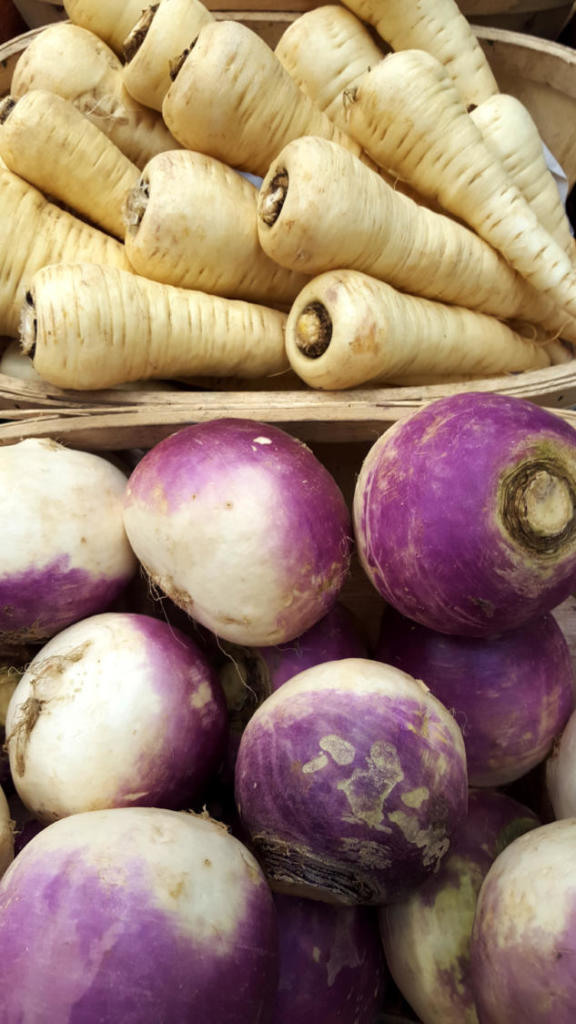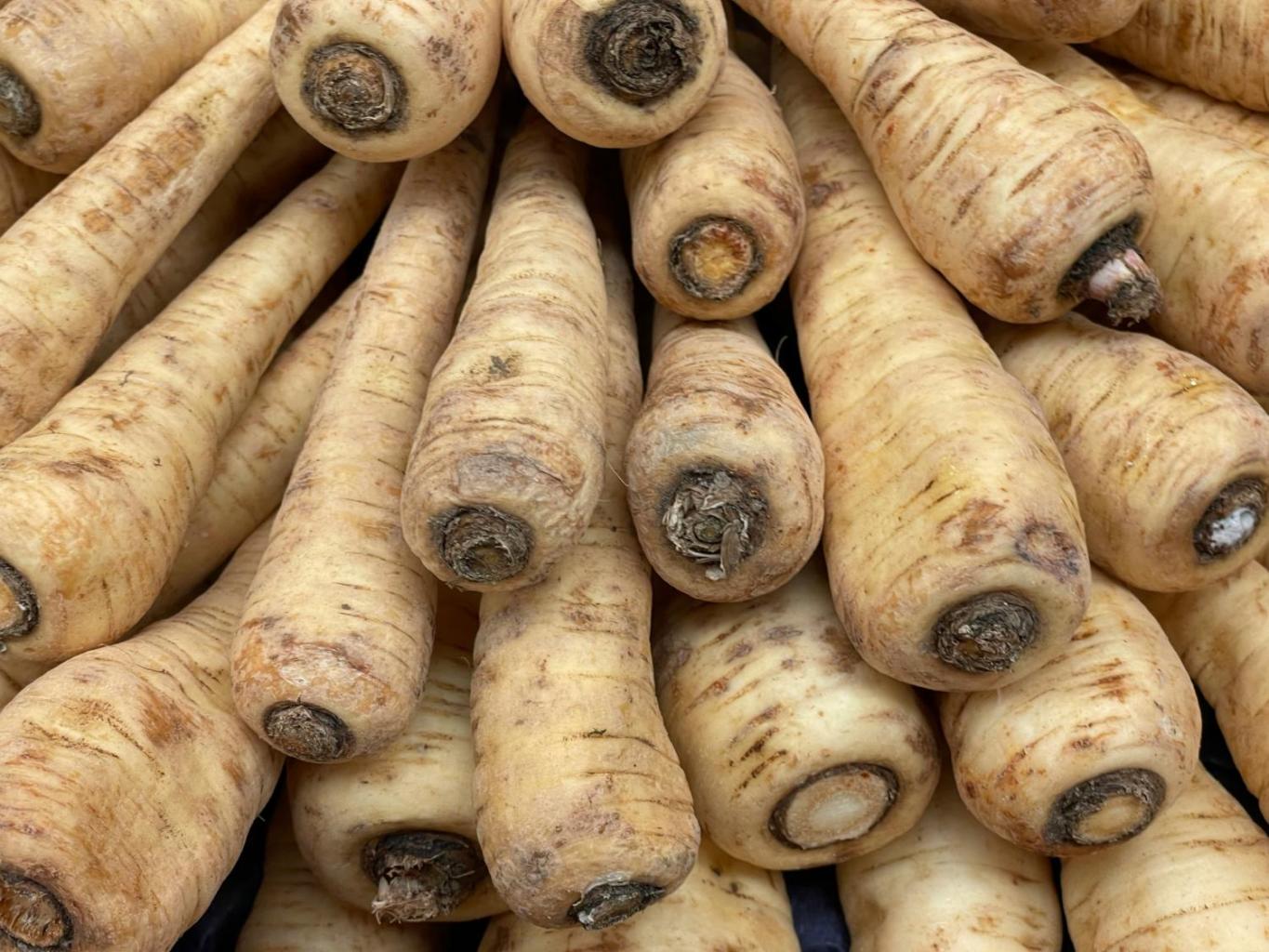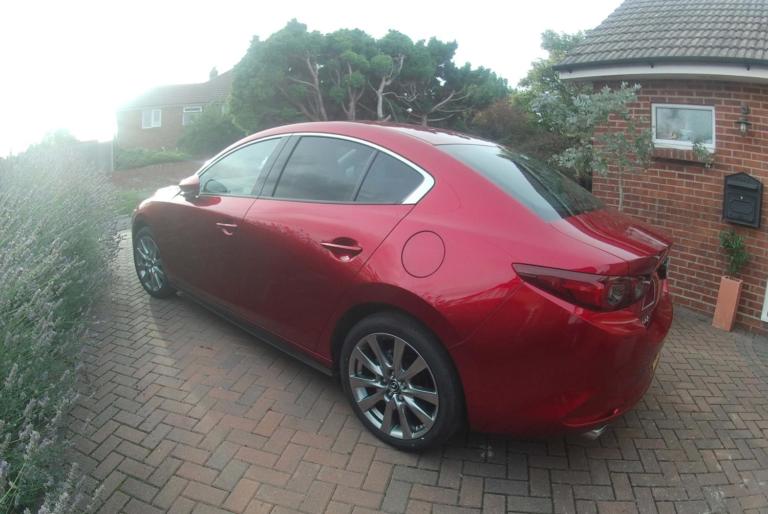By Tony Chalcraft
Mid-summer may seem a strange time to talk about turnips, but late July or early August is perfect for sowing this under-appreciated vegetable. Before saying more, let’s be clear about the type of turnip in question: I’m talking about the ‘true’ turnip, not the swede (sometimes also called a turnip in northern England). ‘Proper’ turnips are generally smaller than swedes, and usually have white (rather than yellowy-orange) flesh. On the outside, most are creamy white, often with purple colouring around the crown (top). Some though, have yellowish skin, while a few are red, purple or even green all over. Root size also varies, but most are best eaten no bigger than cricket ball-size, although ideally smaller.
One of the reasons turnips are suited to late summer sowing is that many varieties are fast-growing. This means, even if started as late as early August, harvestable roots should be ready by mid-October. Preferring cooler conditions, turnips sown earlier in summer can suffer in hot and droughty conditions. In the cooling and shorter days of autumn, the roots take up moisture better and swell quickly. This doesn’t mean turnips are only a late-season crop. It’s quite possible to start them in April (even before under cover), for harvest in early summer. But to me, that just doesn’t seem right. Turnip time is surely autumn and into winter, not May or June.

If sowing turnips in late summer, it’s important to choose a suitably quick-growing type. There are lots of modern varieties, some of which are expensive F1 seed. I always use the far less fancy and cheaper Purple Top Milan, a variety that’s been around since the end of the nineteenth century. Deservedly popular with many gardeners, this has the classic turnip look. White inside, its skin is half-white and half-purple, the colour splashed around the crown. Although it will grow large, this is a turnip best eaten small – I prefer to harvest when less than ten centimetres in diameter. Golf ball-sized roots are the most tender, and can be pulled within as little as seven weeks of sowing in good conditions. This is Purple Top Milan’s main advantage; no other turnip I’ve grown produces edible roots so quickly.
I always sow turnips directly into the ground in a shallow drill (line) made with a hoe. If it’s dry, the drill bottom is soaked with water poured from the can spout. Seed is sown sparingly and covered carefully. Seedlings should emerge within four to seven days. It’s advisable to protect the crop from pests. Wood pigeons will strip turnip leaves, and in some years, cabbage white butterfly caterpillars (turnips are brassicas, a member of the cabbage family) will also defoliate the plants. Another pest can be the grubs of the cabbage root fly, which mine into the roots. To keep all these at bay, I cover with woven mesh rather than wider netting, as this frustrates all three predators, especially the pesky root fly!
Lots of people say they don’t like turnips. Perhaps they’ve been scarred by an encounter with an overlarge, fibrous root, or confused them with the stronger-flavoured swede. Even if you’re not a fan, it’s worth remembering that this is a vegetable with lots of nutritional pluses. Turnips are good sources of vitamins C, A and K, and high in potassium and other minerals.
So, if you have some empty space on the veg plot in the next few weeks, why not give turnips a try?












Add a comment